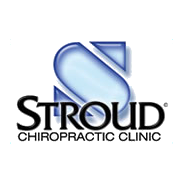
Between each vertebra in your spine is a thin disc of cushion that helps with mobility and keeps everything in place and comfortable. When one of these slips out—known as a herniated disc—it can be extremely painful, causing back pain, mobility issues, and more. There are many causes, and when untreated, it can lead to disability, nerve compression, and more. It’s important to recognize symptoms, so below are a few of the most common.
3 Common Signs of a Slipped Disc
1. Back Pain
Most herniated discs occur in the lower back, and they can cause significant pain throughout the day. It can lead to nerve compression, muscle tightness, and shooting pain throughout the lower back and into the buttocks, arms, and legs. Discs that have slipped higher up the spine will create neck and arm pain.
2. Weakness
 Over time, muscles surrounding the slipped disc will become weaker, making it difficult to hold yourself up straight, lift items, and move. In older patients, it can lead to falls, and the accompanying pain may prevent you from performing at work and handling other tasks.
Over time, muscles surrounding the slipped disc will become weaker, making it difficult to hold yourself up straight, lift items, and move. In older patients, it can lead to falls, and the accompanying pain may prevent you from performing at work and handling other tasks.
3. Tingling, Numbness & Burning
Any spinal nerves that are stressed by the slipped disc will have difficulty communicating with your brain and create varying sensations. You may feel numbness in the affected area, or you may experience a burning or tingling sensation. These may manifest when you’re in specific positions, such as laying down, and vary in severity.
Constant back pain from a herniated disc significantly impacts quality of life, which is why you should seek chiropractic care as soon as possible. For over 32 years, residents of Archdale, NC, have turned to Stroud Chiropractic Clinic for all their pain management and recovery needs. They address a variety of issues, ranging from neck and back pain to slipped discs and sports injuries, and you can count on their staff to build a customized treatment and rehab plan for you. Call (336) 434-2107 to schedule a free consultation, and connect on Facebook for news and updates. You can learn more about their practice on their website.
About the Business
(35 reviews)
Have a question? Ask the experts!
Send your question

